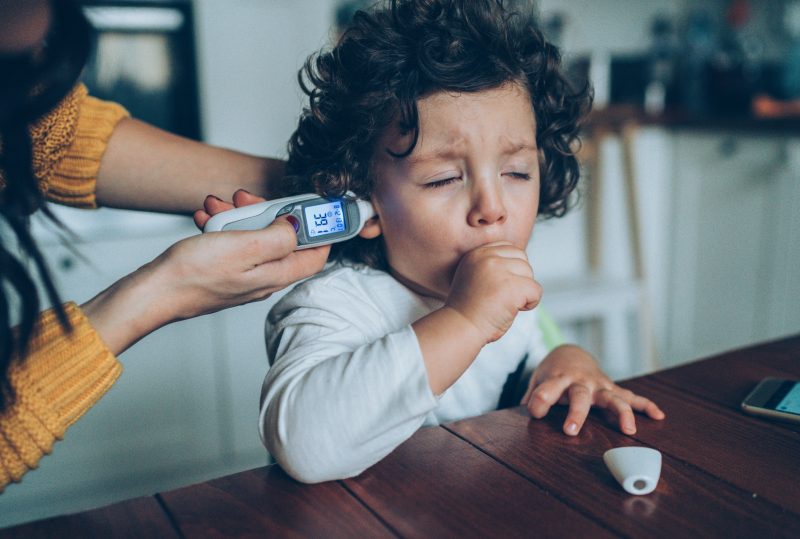 You’ve probably heard of croup. It causes the telltale “barking” cough that mimics that of a seal and the high-pitched, squeaky noise when kids breathe.
You’ve probably heard of croup. It causes the telltale “barking” cough that mimics that of a seal and the high-pitched, squeaky noise when kids breathe.
But if your child has ever come down with croup, which causes inflammation in the upper airways, it can be a scary experience.
“At first, a child may have cold symptoms,” said Dr. Therese Linnon, a pediatrician at Akron Children’s Pediatrics, Warren. “But as the upper airways along the windpipe and voice box become irritated and swollen, a child may become hoarse and have a barking cough. If the airways continue to swell, breathing can get harder.”
Croup is typically caused by the same viruses that cause the common cold, so it’s no surprise that it’s the most frequent reason for coughs in the fall and winter months.
Common croup symptoms
Croup symptoms generally peak 2 to 3 days after symptoms of a viral infection begin and usually last 3 to 7 days.
Symptoms are most severe in children 6 months to 3 years because their airways are smaller, but older kids can be affected, too. Symptoms of croup are often worse at night and when children are upset or crying.
Typical croup symptoms include:
- A runny, stuffy nose
- Fever
- A harsh, barking cough (often sounds like the barking of a seal)
- Hoarseness or loss of voice
- Fever
- High-pitched whistling or squeaking sound when breathing in (called stridor)
In the most serious cases, a child also might breathe very fast or have retractions (when the skin between the ribs pulls in during breathing). The child may appear pale or have a bluish color around the mouth due to a lack of oxygen.

Symptoms of croup are often worse at night and when kids are upset or crying.
Diagnosis and treatment for croup
Doctors can usually diagnose croup by listening for the telltale barking cough and stridor, as well as asking if the child has had any recent respiratory illness with a fever, runny nose and congestion.
Breathing in moist air helps most kids feel better and sometimes stops the severe coughing. You can use a cool-mist humidifier or run a hot shower to create a steam-filled bathroom, where you can sit with your child in there for 10 minutes. In the cooler months, taking your child outside for a few minutes to breath in the cool air can ease symptoms, as well.
In addition, ibuprofen or acetaminophen (only in children over 6 months old) can make them more comfortable, and as with most illnesses, rest and plenty of fluids are recommended.
Most cases of viral croup are mild and can be treated at home with little-to-no complications. In rare cases, however, croup can be severe and even life threatening.
Call a pediatrician immediately or get medical attention if your child has:
- Difficulty breathing, including rapid or labored breathing
- Retractions: when the skin between the ribs pulls in with each breath
- Stridor: high-pitched or squeaking noise when inhaling
- A pale or bluish color around the mouth
- Drooling or difficulty swallowing
- Signs of dehydration (including a dry or sticky mouth, few or no tears, sunken eyes, thirst, no urine or only a little dark yellow urine for 8-12 hours)
- Extreme tiredness
Preventing croup
The same methods you use to reduce your child’s risk for the common cold will go a long way in also preventing croup.
“Frequent hand washing by you and your child, and avoiding contact with people who have respiratory infections are the best ways to prevent spreading the viruses that cause croup,” said Dr. Linnon. “It’s also a good idea to stop your child from sharing cups and silverware with others.”
For more information on croup, contact one of our pediatricians.










